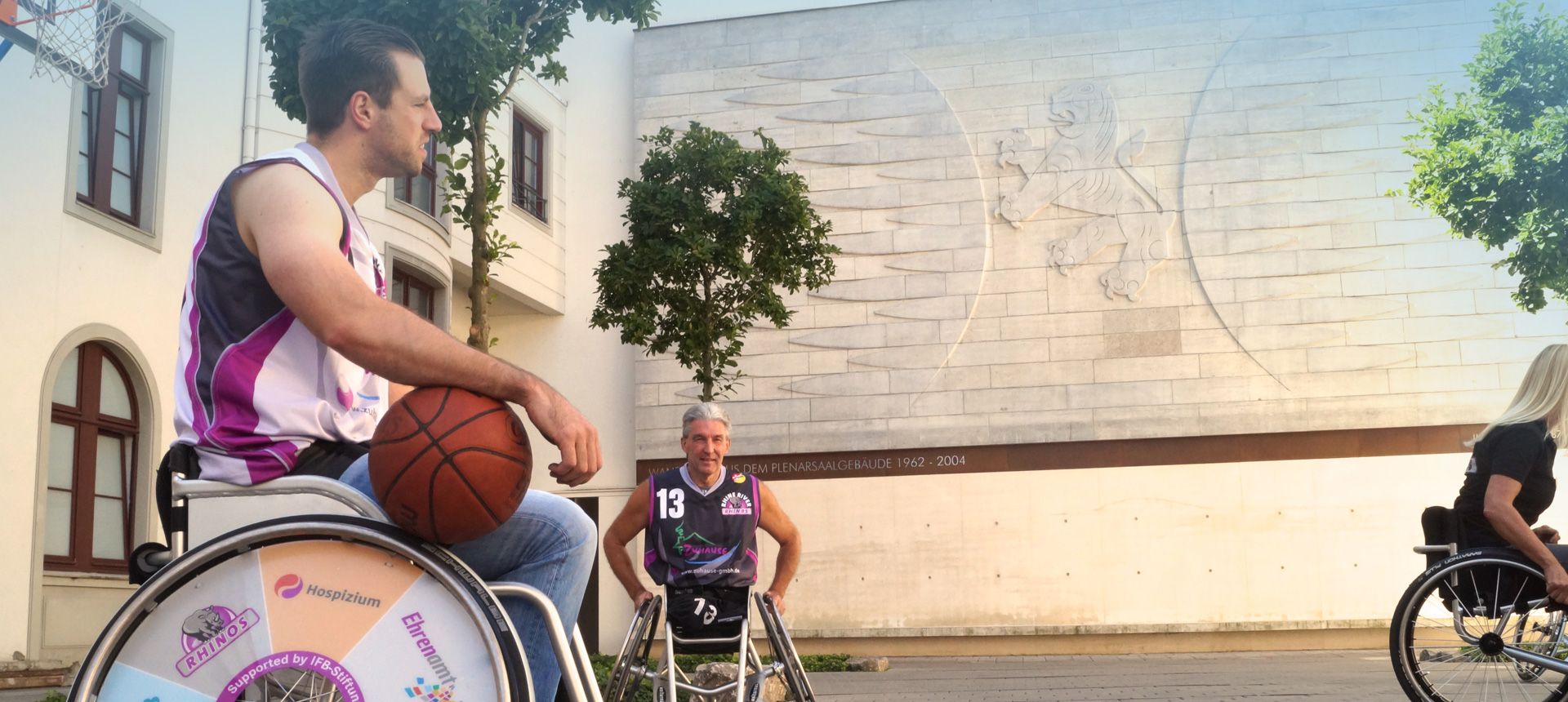Day trips
Historic Road
This route takes you through famous landmarks in the millennia-old history of the Hessian people, from the Celts to Charlemagne and from the first kings to the last emperor. The trail begins in the Hessian State Capital of Wiesbaden and stops off at the Carolingian Church of Lorsch; the route then continues all the way to the northern spa town of Bad Arolsen before finally taking you to the historical university town of Marburg. The final stop is the old residence town of Weilburg.
Romantic Road
This route leads right through Hessen and takes you past some of the most revered sights in Germany. You’ll get to see lots of picturesque medieval towns like Frankenberg, Rüdesheim, Hirschhorn am Neckar and Büdingen with romantic timber-framed houses and narrow streets. The Lahn and Rhine valleys have lots of areas where you can enjoy a stunning view of the mountains and beautiful surroundings.
German Fairytale Road
Hessen has a close connection to fairytales thanks to the Brothers Grimm, who lived and worked in Hanau. Perhaps Hansel and Gretel got lost in the uninhabited woods of Kaufungen? And didn’t Sleeping Beauty slumber for 100 years in the castle in the small town of Sababurg in the Reinhardswald? If you’d like to discover romantic places for a day trip, castles and timber-framed houses, you should visit the German Fairytale Road.
Mountain Road
The tourist route along the Bergstraße Mountain Road is characterised by its mountains, castles, forests and vineyards. The road goes from Darmstadt to Heidelberg; it’s an absolute paradise for walkers, canoeists and outdoor enthusiasts. Excellent wine is cultivated on the protected slopes.
Sleeping Beauty Castle in Sababurg
According to the Brothers Grimm, the castle in which Sleeping Beauty was conjured into a long and deep sleep is located at the heart of the Reinhardswald between Kassel and Göttingen. You can even witness scenes from the legendary fairytale at the 670-year-old castle. Concerts and guided tours through the castle and surrounding gardens are held from March to October.
Tel.: +49 (0) 5671-80 80
www.sababurg.de (in German)
Braunfels Castle
The imposing spires of Braunfels Castle are remnants of the town’s medieval past. The baroque castle boasts an extensive collection of medieval artefacts. A “Medieval Spektakulum” is held every summer, where a group of international stuntmen recreate fight scenes and battles, and many other attractions take visitors back to the distant past. Castle tours are also offered in English and French and can be booked on +49 (0) 6442-5002 or online. The castle is open daily from April to October and on specific dates during the other months.
Belzgasse 1
Tel.: +49 (0) 6442 - 500 2
www.schloss-braunfels.de (in German)
Eberbach Abbey
There’s no better place than Eberbach Abbey to start a tour through the Rheingau’s vineyards. The Cistercian monks began the wine-growing tradition here in the 12th century. The museum gives visitors a real insight into the wine-growing region and life at the abbey in the Middle Ages.
Tel.: +49 (0) 6723 - 9178 100
https://kloster-eberbach.de/en/eberbach-monastery/
Saalburg
The Saalburg is located just four kilometres outside Bad Homburg; it’s a meticulously reconstructed Roman fort that used to form part of the 615-kilometre Limes Germanicus, a fortified wall that was built by the Romans from the Rhine to the Danube.
Tel.: +49 (0) 6175 - 937 40
http://www.saalburgmuseum.de/english/sb_en_home.html
Rhine-Main Regional Park
The Rhine-Main Regional Park has developed into an extensive network of artistic gardens, lakes, picnic areas, castles and lots more. The park stretches over a 190-kilometre marked route and leads to many attractions. Some of the many highlights include the former army base in Bonames that has been transformed into an ecological park, and a cycle path along the historical Hohe Straße (“High Road"). The relaunched website www.regionalpark-rheinmain.de (in German) offers a wide range of tips and maps (including GPS routes).
Geopark Bergstraße-Odenwald
The Bergstraße-Odenwald natural park was incorporated into the European Geopark Network in 2002; it now protects Europe’s geological heritage and promotes sustainable development. The park covers an area of 3,200 m2 in three different sections that are surrounded by the Rheintal, Maintal and Neckartal valleys. Rocks, geological changes and the landscape provide great insights into 500 million years of geological history.
Tel.: +49 (0) 6251-70 79 90
https://geo-naturpark.net/en/
Palmengarten
Founded in 1868, Frankfurt’s Palmengarten is the most important botanical garden in the region with a huge selection of tropical plants, greenhouses and other exhibitions. Its great complexity lets you take a pleasant stroll through the world’s tropical forests. The plants are mainly arranged according to their natural habitat, such as rainforest, mangrove, monsoon and savannah.
Siesmayerstraße 61
Tel.: +49 (0) 69 - 212 339 39
http://www.palmengarten.de/#/en_GB/index/index
Botanical Garden in Gießen
Germany’s oldest botanical garden covers an area of 4 hectares on the former castle grounds of Louis V, the Landgrave of Hesse-Darmstadt. The garden has constantly evolved over its 400-year history and now houses over 7,500 types of plant. It’s looked after by the University of Gießen and used for biological, agricultural, geographical, medical and veterinary research. The garden is free to visit every day (from 20 March to 20 October).
Senckenbergstr. 6
D–35390 Gießen
Tel.: +49 (0) 641-9935240
www.uni-giessen.de/cms/ueber-uns/botanischer-garten/ (in German)
Taunus Information Centre
The Taunus is a low-lying mountain range. It doesn’t just boast the 878-metre Feldberg; there’s also a wide range of leisure activities to be enjoyed all year round – hiking, mountain biking, cross-country skiing and mountain climbing. The Taunus Information Centre is a great place to start (Hohemarkstraße 192, Oberursel). You can get there via public transport from Frankfurt (U3).
www.taunus.info (in German)
Bergpark and Wilhelmshöhe Palace
Bergpark Wilhelmshöhe is an impressive example of German Romanticism with one of the greatest architectural landmarks and parks in the world. Kassel is symbolised by its 71-metre Hercules statue at the top of a pyramid.
www.wilhelmshoehe.com (in German)
Edersee
One of Hessen’s most popular holiday destinations is the Edersee, which connects three lakes. The reservoir is 27 km in length, making it the largest in Germany. High above the lake stands Waldeck Castle, which was the seat of the courts over 1,000 years ago. The picturesque Diemelsee is considerably smaller and surrounded by a national park. The third lake is the Twistesee. All three are hugely popular with nature lovers and watersport fans alike.
www.edersee.de (in German)
Rhön National Park
When students from the University of Darmstadt tested a motorless flying machine in 1911, the sport of hang-gliding was born. Numerous sports enthusiasts meet at weekends to practise hang-gliding and parasailing at the Wasserkuppe flying centre. In winter, the Wasserkuppe mountain becomes a skiing destination with 25 ski lifts and 255 kilometres of cross-country trails. There are also over 5,000 kilometres of hiking and cycling trails through the national park.
www.rhoenline.de (in German)
Health spas
The European tradition of thermal baths originated in Roman times and is still flourishing in the Rhine-Main region. The region has over 30 thermal springs and spas for you to choose from, which means you can spend a few hours relieving stress or several weeks looking after your body and soul. If you’d like to find out more about the region’s spas and health resorts, get in touch with the German Spa Association at http://www.hessischer-heilbaederverband.de(in German) or visit https://www.hessen-tourismus.de/en/home/.
Canoe camping on the Lahn
You can particularly enjoy Hessen’s landscapes by taking a canoe ride along the River Lahn. The Lahn is navigable all year round from Marburg up to its mouth in the Rhine near Lahnstein. Canoes and pedal boats can be hired at numerous places. The banks of the Lahn are home to the university cities of Marburg and Gießen, the historical city of Wetzlar with its majestic cathedral, and the castles and medieval ruins in Weilburg, Runkel, Schaumburg, Balduinstein, Laurenbourg, Langenau, Burg Stein and Nassau. Professionals can organise your accommodation and equipment for weekend getaways. But make sure you book early enough, as the canoe rides are very popular! You can find a list of canoe rental companies at https://en-gb.daslahntal.de/public/.
Rüdesheim-Assmannhausen am Rhein
The picturesque town of Rüdesheim on the banks of the Rhine is known for its scenery, vineyards and historic town centre. Rüdesheim and the Upper Middle Rhine Valley are UNESCO world heritage sites with numerous cultural attractions like castles, forts, abbeys and well-preserved timber-framed houses. You can zip-wire your way to the symbolic Germania Statue and enjoy a panoramic view of the entire Rheintal valley. The Drosselgasse, a narrow street with shops and inns, is a good place to try the various varieties of Riesling wine from the local vineyards.



